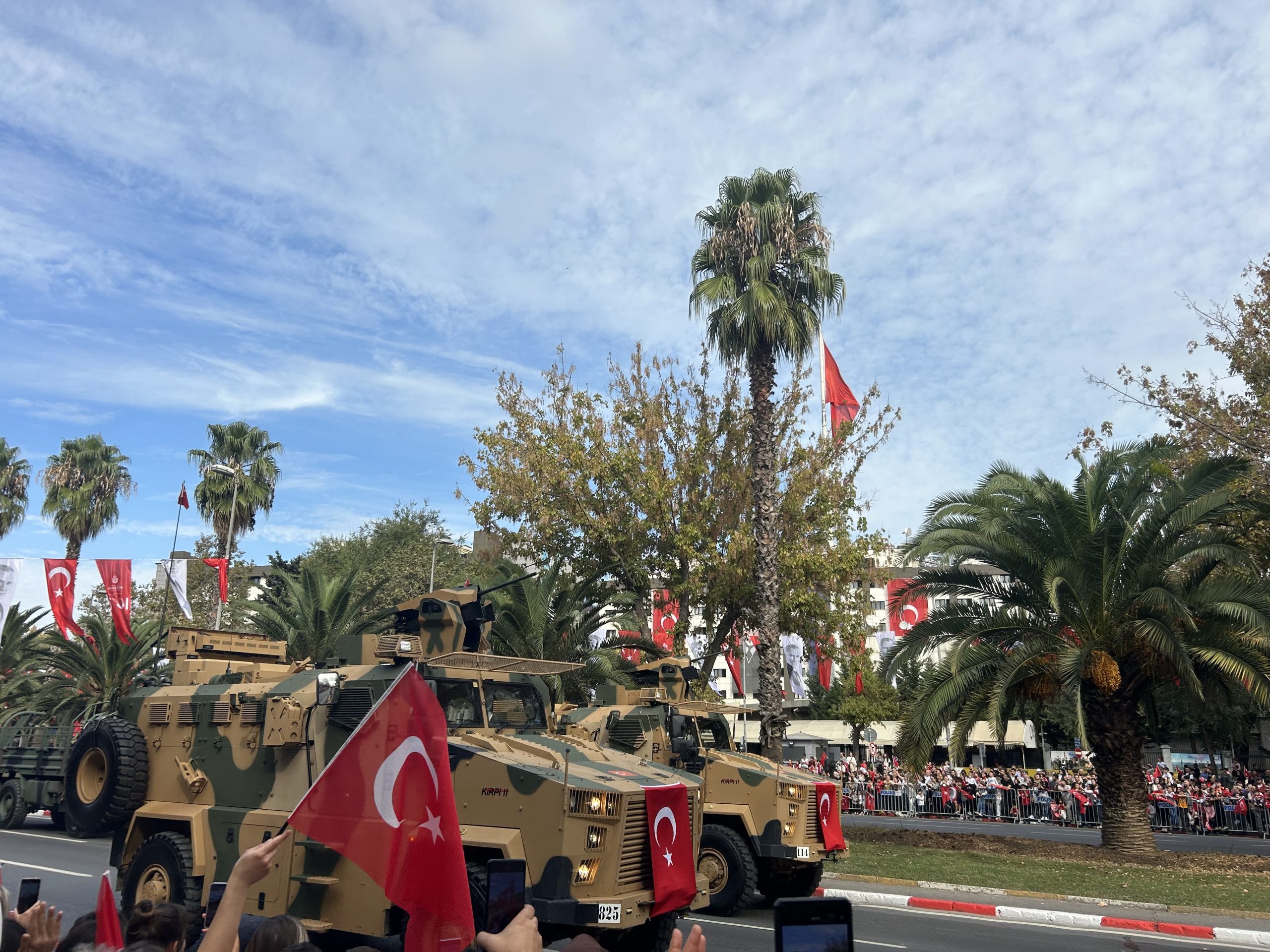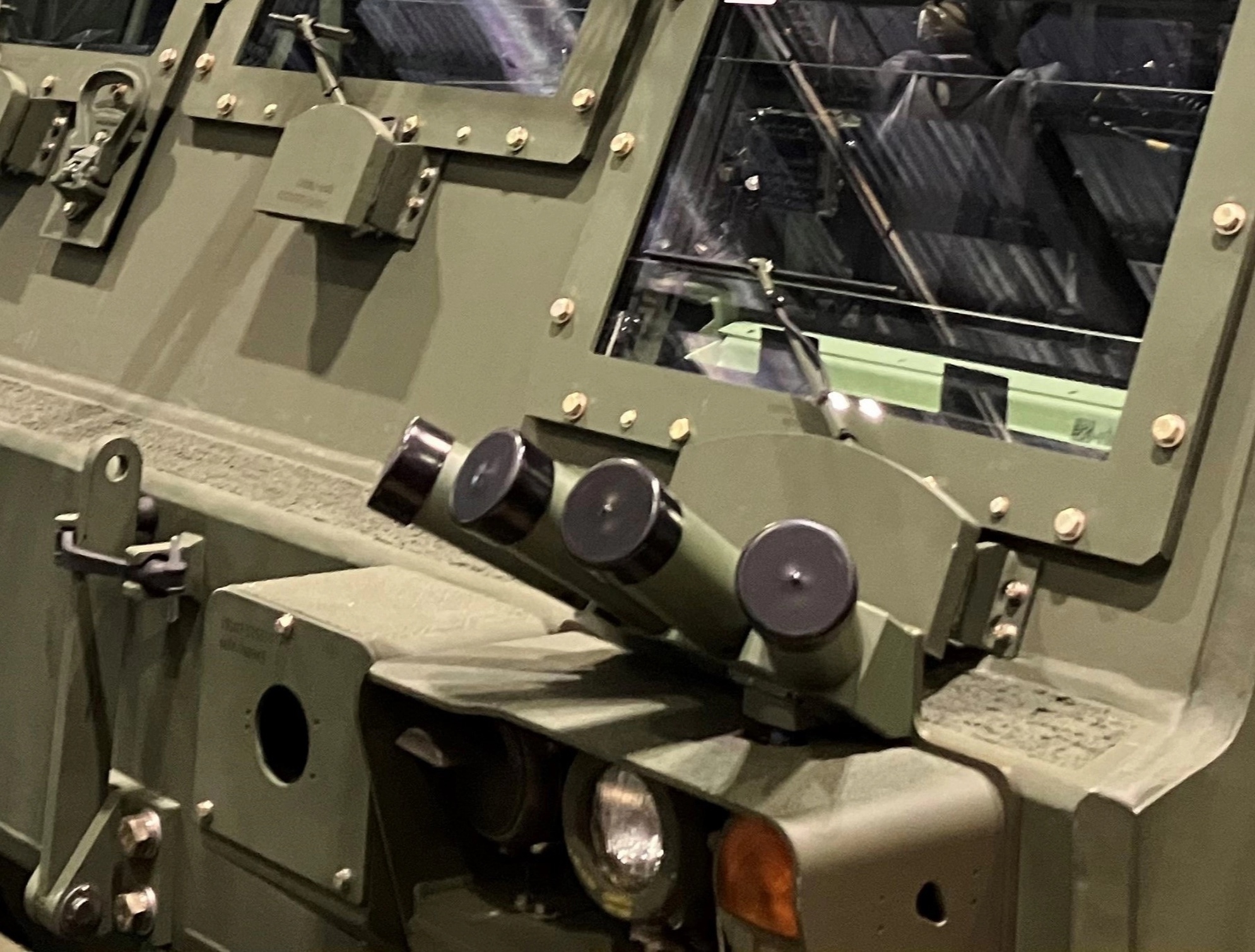Uralvagonzavod announces TOS-1A delivery
by Sam Cranny-Evans, published on 9th November, 2024.
Uralvagonzavod has delivered a batch of TOS-1A Solntsepek thermobaric multiple rocket launchers (MRL) to the Russian MoD, according to a 5th November press release from Rostec.
The TOS-1As were delivered in an updated configuration for the war in Ukraine. This includes cage armour around the launcher to provide additional protection for the vehicle’s rockets. Thermobaric rockets can be very unstable and ignite easily if damaged by a blast or shaped charge. Other updates are thought to include and electronic warfare system to provide some jamming protection against FPV drones, as well as improvements to the fire control system.
The press release states that Uralvagonzavod has delivered “another batch” of TOS-1As, indicating that this is not the first of the year, but no other record of deliveries in 2024 can be found. However, Omsktransmash, another company within Rostec, did report a delivery of the system in September 2022. Since then, production output of the system has increased by 2.5 times as a result of hiring additional staff and moving to 24 hour work on two shifts per day, according to a Telegram post from the MoD on the 19th of April.
The TOS-1A is a 220 mm MRL designed to fire thermobaric rockets in salvos against area targets. It has been used extensively by Russian forces fighting in Ukraine as part of combined fires applied to Ukrainian defensive positions. Each vehicle carries 24 MO.1.01.04 rockets with a range of 6 km, a full salvo can affect an area of 40,000 square metres. Thermobaric MRLs were developed by the Soviet Union for use in Afghanistan, and Russia has continued their use into Chechnya, Syria, Iraq, and Ukraine.

This image shows a battery of TOS-1As firing. They can fire a single rocket, two rockets, or an entire salvo of 24 rockets. Credit: Russian MoD.
The name thermobaric describes what the weapon does: Thermo means heat, baric means pressure. The explosion of these rockets is designed to create a lot of heat and a lot of pressure, up to 2,700 degrees Celsius in fact, and the peak pressure can last for up to a second. For comparison, a typical high explosive rocket would produce a much higher peak pressure, but it would last at most for a few milliseconds. The warhead of a thermobaric is typically filled with a mixture of aerosolised fuel and metal components, when it detonates, the fuel disperses very quickly (microseconds) from the centre of the blast and then ignites – again, within microseconds. There are a few different types of weapons within this category, but this short explainer illustrates the basic principles.
This makes the weapon different from conventional high explosives. A high explosive will be stopped by structures, it might knock a wall over, but it also might not. A thermobaric warhead could theoretically disperse its aerosolised fuel around a wall or into a bunker before it detonates. This means that Ukrainian units sheltering in buildings or bunkers within a trench system could be more effectively targeted by the system that with high explosives alone.
In 2020, the Russian news outlet Izvestiya reported that a new rocket was under development with a range of 15 km, and that the 100 or so TOS-1As in service would receive the updated rocket as well as a digital fire control system that would enable them to be integrated into Russia’s reconnaissance-fire contour. However, it is not clear whether any of these modifications had been realised by the time of the invasion in 2022, it is possible that the demands of the war have disrupted previous modernisation plans.
In any case, it is apparent that Russia’s defence industry is increasing its output and preparing for a prolonged period of confrontation. The United Aircraft Corporation reported its fourth delivery of Su-34 fighter bombers this year, compared with just three in 2023 and possibly one in 2022. Rostec also announced a delivery of a fourth batch of BMP-3s and a second of BMD-4Ms in October. This is just some evidence of increased production within Russia’s defence industry.

Sign Up for Updates!
Get insider news, tips, and updates. No spam, just the good stuff!





